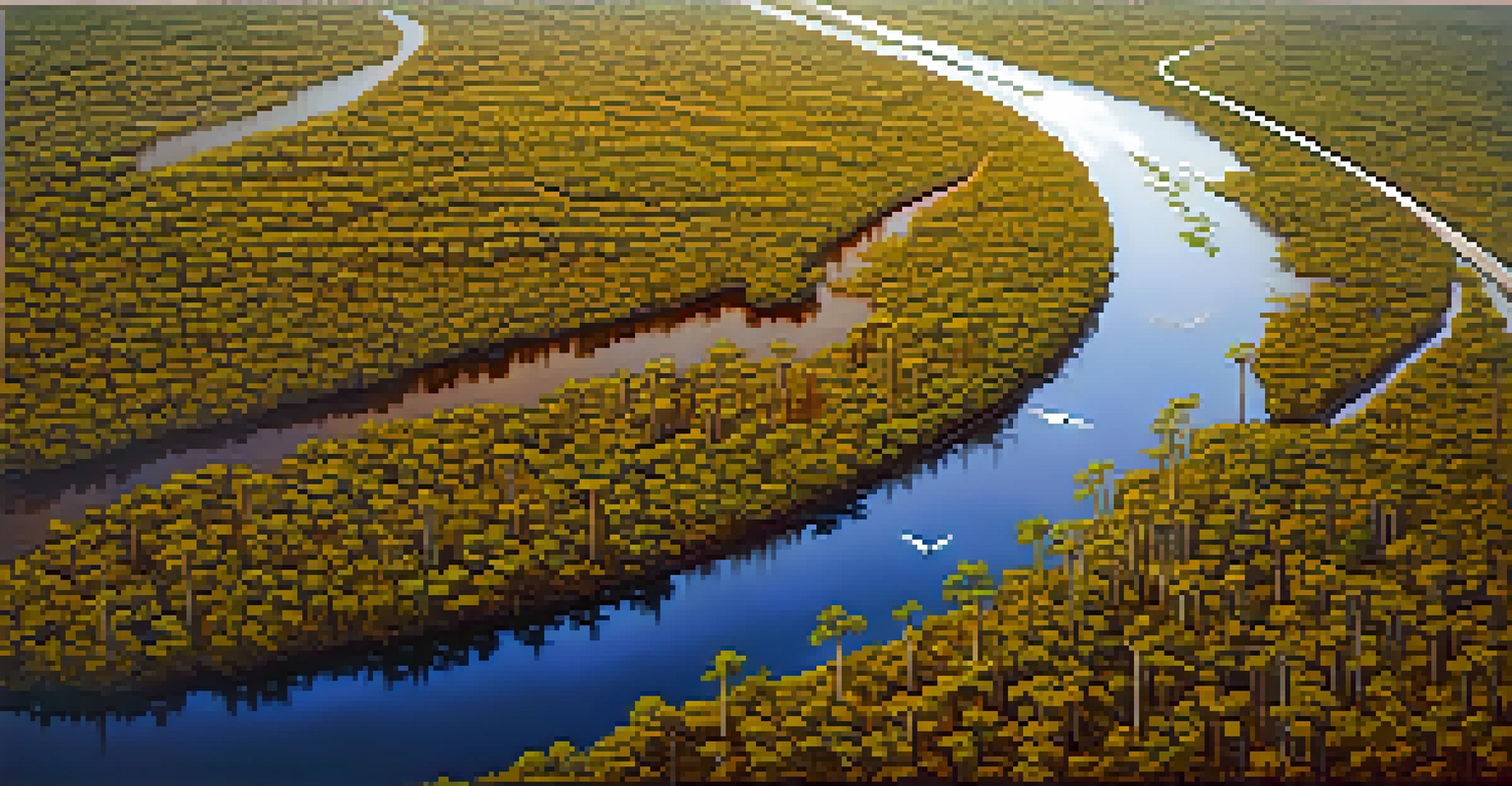Exploring Florida's Natural Parks: A Guide for Nature Lovers

Why Florida's Natural Parks Are a Must-Visit
Florida is home to an incredible array of natural parks that showcase the state's diverse ecosystems. From lush wetlands to vibrant coastal habitats, these parks provide a sanctuary for countless species of flora and fauna. Nature lovers will find unique opportunities to explore, learn, and connect with the environment in these stunning settings.
In every walk with nature one receives far more than he seeks.
Each park offers its own distinct charm, whether it's the serene beauty of the Everglades or the picturesque trails of the Apalachicola National Forest. Exploring these parks allows visitors to witness firsthand the vibrant wildlife, including manatees, alligators, and a multitude of bird species. It's not just about the scenery; it’s about immersing yourself in nature's splendor.
Moreover, these parks often serve as the backdrop for various recreational activities, such as hiking, kayaking, and birdwatching. With so much to offer, Florida's natural parks are a treasure trove for anyone looking to escape the hustle and bustle of everyday life and embrace the outdoors.
Top Natural Parks to Visit in Florida
When it comes to choosing which parks to explore, there are a few top contenders that stand out. The Everglades National Park is perhaps the most iconic, renowned for its vast wetlands and unique wildlife. Here, visitors can take airboat tours or stroll along boardwalks, providing unparalleled views of this UNESCO World Heritage Site.

Another gem is the Big Cypress National Preserve, which is adjacent to the Everglades and offers stunning swamp landscapes. It’s a perfect spot for hiking and enjoying scenic drives, especially during the dry season when wildlife is more active. The park is also a haven for photographers looking to capture the beauty of the cypress trees at sunset.
Explore Florida's Unique Parks
Florida's natural parks offer diverse ecosystems, from wetlands to coastal habitats, showcasing vibrant wildlife and stunning landscapes.
Don’t overlook the smaller parks, like the Myakka River State Park, which features crystal-clear waters and diverse habitats perfect for canoeing or picnicking. Each park has something unique to offer, making it essential to plan your visit based on your interests and the experiences you seek.
Wildlife Encounters: What to Expect
One of the most thrilling aspects of visiting Florida's natural parks is the opportunity to encounter wildlife up close. From playful dolphins in coastal areas to the infamous alligators in the wetlands, the diversity of species is astounding. Each park provides a different experience, so expect to see various animals that call these locations home.
The Earth has music for those who listen.
Birdwatchers will be especially delighted, as Florida is a migratory hotspot for many species. The chance to spot roseate spoonbills or ospreys soaring overhead adds an exciting layer to your park visit. Whether you're a novice birdwatcher or a seasoned expert, these parks create a perfect setting for observation and appreciation.
Just remember to maintain a respectful distance and adhere to park guidelines when observing wildlife. This ensures both your safety and the protection of these beautiful creatures, allowing future visitors to enjoy the same magical encounters.
Best Time to Visit Florida's Natural Parks
Timing your visit can make a significant difference in your experience at Florida's parks. The best time to explore is typically during the cooler months, from November to April, when temperatures are pleasant and humidity is lower. This is also when the wildlife is most active, making it easier to spot animals and enjoy outdoor activities.
Conversely, summer months can bring heat and heavy rainfall, which may limit certain activities like hiking or kayaking. However, if you’re prepared with sunscreen and rain gear, you can still have an enjoyable experience. Just keep in mind that some parks might be less crowded during the summer, allowing for a more serene atmosphere.
Best Times for Park Visits
The ideal time to visit Florida's parks is during the cooler months from November to April, when wildlife is most active and temperatures are pleasant.
Ultimately, the choice of when to visit depends on your personal preferences and what you hope to achieve during your trip. Whether you're aiming for a quiet retreat or an action-packed adventure, planning around the seasons can enhance your time in these natural wonders.
Essential Gear for Your Park Adventure
Packing the right gear is crucial for making the most of your visit to Florida's natural parks. Comfortable footwear is a must, especially if you plan to hike or walk along trails. Sturdy sneakers or hiking boots will keep your feet happy as you explore the diverse landscapes and enjoy the fresh air.
Don't forget to bring essentials such as water bottles, sunscreen, insect repellent, and a first-aid kit. Staying hydrated is vital, especially during warm days, and protection from the sun and bugs can enhance your comfort level significantly. A backpack to carry your gear will also make your adventures more enjoyable.
Lastly, consider bringing binoculars and a camera to capture the stunning views and wildlife encounters. These parks are full of photographic opportunities, and having the right tools on hand can help you create lasting memories of your time spent in nature.
Conservation and Responsible Visiting
As you venture into Florida's natural parks, it’s essential to embrace the principles of conservation and responsible visiting. These areas are not just beautiful; they are crucial ecosystems that need our protection. Following park rules, staying on designated trails, and respecting wildlife are all ways to minimize your impact on these vulnerable environments.
Additionally, consider participating in park-sponsored programs or volunteer opportunities to give back to the areas you love. Many parks offer educational programs that teach visitors about local ecosystems and conservation efforts, allowing you to deepen your understanding while making a positive contribution.
Embrace Responsible Visiting
Practicing conservation and responsible visiting ensures that Florida's natural parks remain protected and enjoyable for future generations.
Responsible visiting ensures that these natural treasures remain intact for future generations. By being mindful of your actions and promoting conservation, you play a vital role in preserving Florida's natural parks and their incredible biodiversity.
Planning Your Trip: Tips and Resources
Planning your visit to Florida's natural parks can be a breeze with the right resources at your fingertips. Start by checking the official park websites for updated information on hours, entry fees, and any special events or programs. This will help you create a tailored itinerary that suits your interests and schedule.
Consider downloading park maps and apps that provide additional insights into trails, wildlife sightings, and nearby attractions. Many parks also offer ranger-led activities, which can enhance your experience and provide valuable context about the area’s natural history.

Lastly, don't hesitate to reach out to local tourism boards or visitor centers for recommendations and tips. They can provide insider knowledge that may lead you to hidden gems and unique experiences, ensuring a memorable adventure in Florida's stunning natural parks.